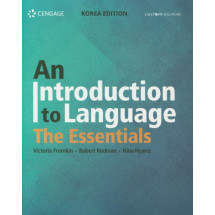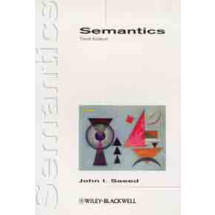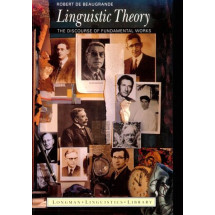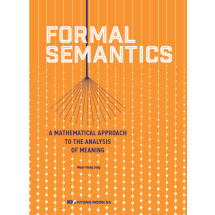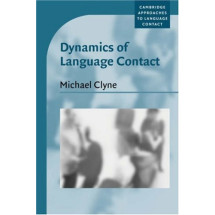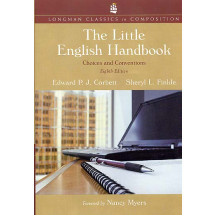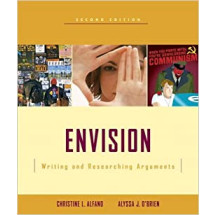Preface to the first edition ix
Preface to the second edition x
Preface to the third edition xi
Abbreviations and notational conventions xii
Introduction: what this book is about and how it can be used 1
1 The sounds: phonetics 3
1.1 Introduction 3
1.2 Spelling vs. pronunciation: the representation of speech sounds 4
1.3 Producing sounds 8
1.3.1 The nature of speech sounds 8
1.3.2 The vocal tract 9
1.4 How sounds differ from each other: the classification of speech sounds 11
1.4.1 The classification of consonants 11
1.4.2 The classification of vowels 17
1.5 Conclusion 25
Further reading 26
Exercises 26
2 The sound system: phonology 31
2.1 Introduction 31
2.2 Introducing order into the chaos: the phoneme 31
2.3 The key to finding the order 37
2.3.1 Minimal pairs 37
2.3.2 Distributional characteristics of allophones 38
2.3.3 Observing allophonic alternations in different word forms 40
2.4 More about the sound system of English 43
2.4.1 Allophones of /l/ 43
2.4.2 Stop phonemes 46
2.4.3 A slightly more complex case: /ɹ/ 51
2.5 The syllable 55
2.5.1 The structure of the syllable 55
2.5.2 Syllabification 59
2.5.3 The syllable and allophonic processes: /l/ revisited 63
2.6 Conclusion 65
Further reading 65
Exercises 66
3 The structure of words: morphology 71
3.1 Introduction 71
3.2 Minimal building blocks: morphemes 71
3.3 Types of morphemes 76
3.4 Morphological analysis of words 79
3.5 Realisation of morphemes: allomorphs 83
3.6 Morphological processes: inflection and derivation 89
3.7 Word-formation 94
3.7.1 What is word-formation? 94
3.7.2 Affixation 95
3.7.3 Compounding 100
3.7.4 Conversion 105
3.7.5 Shortening 107
3.8 Conclusion 109
Further reading 110
Exercises 110
4 The structure of sentences: syntax 113
4.1 Introduction: rules and grammar 113
4.2 The building blocks: words and phrases 116
4.2.1 Constituency tests and phrases 116
4.2.2 The internal structure of phrases 123
4.3 The functional level: subjects, objects, adverbials, predicates, complements 131
4.4 The mapping of form and function 140
4.5 Conclusion 141
Further reading 142
Exercises 142
5 The meaning of words and sentences: semantics 145
5.1 Introduction 145
5.2 What does ‘meaning’ mean? Words, concepts and referents 145
5.3 Compositional and non-compositional meaning 154
5.4 The network: organising word meaning 160
5.4.1 Words and other words 160
5.4.2 Same or different? 167
5.5 Conclusion 175
Further reading 176
Exercises 176
6 Studying language in use: pragmatics 181
6.1 Introduction 181
6.2 Expressing intentions through language 182
6.2.1 Using language to act: speech acts 182
6.2.2 Speech acts: a closer look 183
6.2.3 Classifying speech acts 185
6.2.4 Realisations of speech acts: direct and indirect speech acts 191
6.2.5 Performing speech acts successfully: felicity conditions 194
6.3 Understanding utterance meaning 197
6.4 Exploring pragmatic principles 200
6.4.1 The Cooperative Principle 200
6.4.2 Politeness 207
6.5 Conclusion 211
Further reading 211
Exercises 212
7 Extensions and applications: historical linguistics, sociolinguistics and psycholinguistics 215
7.1 Introduction 215
7.2 Historical linguistics: how languages develop 215
7.3 Sociolinguistics: the social significance of language 224
7.4 Psycholinguistics: how do we store and process language? 229
7.5 Conclusion 232
Further reading 233
Exercises 233
8 Linguistics as an empirical science 237
8.1 Introduction 237
8.2 How to do empirical research in linguistics 237
8.3 A corpus-based study in morphology: who or whom, that is the question 241
8.4 An experimental study in syntax: the dative alternation 255
8.5 Conclusion 264
Further reading 265
Exercises 265
Glossary 267
References 283
Subject index 287


